February 2013. Few people are aware that John Muir, a founding father of American conservation, travelled alone to Chile in 1911 at the age of 73 because he wanted to see the Monkey Puzzle Tree, Araucaria araucana, in its native forests. Muir never published any articles or books describing these travels before he died in 1914. This last adventure of Muir’s amazing life was essentially “lost to the world” until his journals from the trip were transcribed and edited by Michael Branch in 2001, and published in the book John Muir’s Last Journey.
Almost exactly a year ago my son and I followed clues in Muir’s sparse journal and sketches, obtained from the Muir historical archives, to reconstruct his route to the site on the slopes of a volcano in central Chile he visited a century ago. After a long search we found the area where he sketched and camped, on private land adjacent to Tolhuaca National Park.
Related Bruce Byers Article: Tracking John Muir to the Monkey Puzzle Forests of Chile (April 2012)
Although we finally located the Muir site last year, we only reached it once, and were only able to spend a couple of hours there. This year our goal was to learn more about the local people who helped him reach the place, confirm the details of his route, and begin to understand the ecological changes in the Araucaria forests since he saw them. Our sleuthing at the very end of our trip last year led us this year to the great-grandson of the man who organized Muir’s trip to the mountains. He was able to tell us exactly where his great-grandfather’s “fundo,” or ranch, had been, and so we finally knew exactly where Muir had sketched the volcanic peaks on the skyline in his journal, and started for the mountains at 6 AM on the foggy morning of November 20, 1911.
When he arrived in Santiago on November 11th, having taken the train from Buenos Aires for two days, Muir had no idea where to find Monkey Puzzle forests. As he usually did, he went to the Botanic Garden, now the Parque Quinta Normal, in which stood the Museo de la Historia Natural. Although the person he spoke with there had never seen Araucaria, and was no help in directing him where to go, he did give him a photograph of the trees, and on the back was written “Araucarias of Vulk. Tolhuaca,” abbreviating the German “vulkan,” volcano. German immigrants, including the director of the Natural History Museum, Federico Albert, dominated Chilean science in the days of Muir’s visit, although there is no evidence that Muir met Albert – also the founder of Chilean nature conservation – when he passed through Santiago.
In Santiago, Muir was told by an American contact, Mr. Rice, that “a Mr. Smith, a lumberman, owning several sawmills, and well acquainted with the forests to the southward, was the most likely man to direct me to the woods that I was in search of, and kindly telegraphed Mr. Smith to meet me at the train, at Victoria.” Victoria lies just to the west of Volcán Tolhuaca, and the note on the back of the photograph from the Botanic Garden must have been Muir’s reason for heading there.
So how were we going to find relatives of that Mr. Smith who might still living the area? Last year we started with the phone book for Victoria, and indeed found one Smith listed there – apparently a business, the listing was for “Smith y Riquelme Limitada,” at Avenida Confederación Suiza 1255. We went to that address, but it turned out to now be the office of the local senator from the area. They did know a “Mr. Smith,” however, a surgeon now living in Temuco; and they pointed down the street to the town plaza, where his sister, Marisol Smith, owned a pastry shop. We dropped by the Confiteria Central, ordering cake and cappuccino, and tried to call her many times, but never managed to talk to Marisol before our trip last year ended. This year, however, our Chilean colleague Aníbal Pauchard managed to talk to Marisol, and she recommended that we talk to her cousin, Harry Smith, who lived at a place called Niagara, east of Temuco. Harry was the one who could tell us the family history, she said.
And she was right. We met Aníbal on a Sunday afternoon, and drove out to Niagara. Harry greeted us warmly, speaking perfect English – his “mother tongue,” it turned out, since his mother was English – and invited us into his lovely old house, where he spread out old photos, letters, and journals, and told us all he could of the family history.
Harry’s great-grandfather, Philip Smith, was the “Mr. Smith” who hosted Muir in Victoria and arranged his trip to the mountains. He first came to Chile in 1883 from Ontario, Canada, to install sawmills for the Waterous Engine Works. He liked the country, and stayed. He named his “fundo,” or what Muir called “the Smith ranch,” Ontario, and the name is still used on maps of the area.
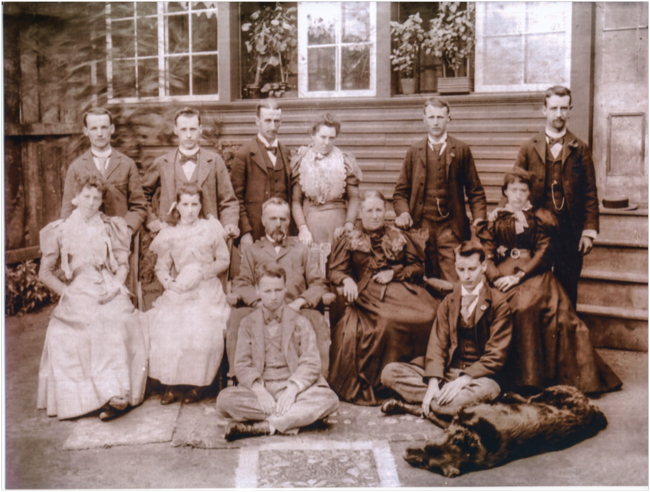
Photo of Philip Smith (seated third from left) with his wife, Ann Walker, his nine children, and two of their spouses, made roughly in the era of Muir’s visit (Photo courtesy of Harry Smith)
Harry’s great-uncle Willy, Philip’s second son, was probably the son mentioned in Muir’s journal who drove him from Victoria to the fundo, “some fifteen miles from Victoria,” in a light buggy drawn by two horses. Harry’s great-uncle Willy lived at Ontario all his life, with his wife Elsie Reynolds, who finally left the fundo in 1947 after Willy died. Philip’s oldest son George, Harry’s grandfather, may have met Muir, but in 1911 he was just completing his own fundo at Niagara where Harry now lives.
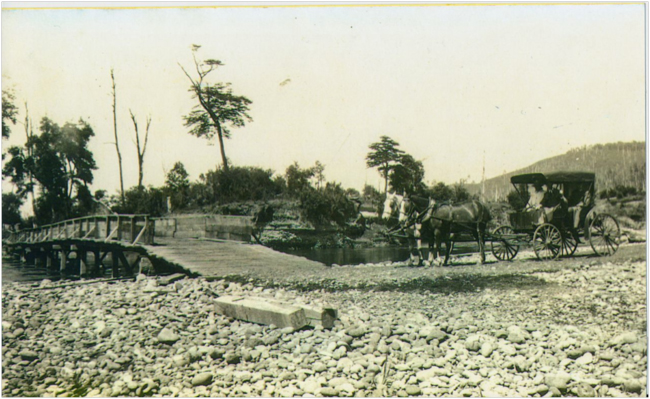
Smith family photo of a two-horse buggy similar to the one that may have been used to take Muir from Victoria to Fundo Ontario (Photo courtesy of Harry Smith)
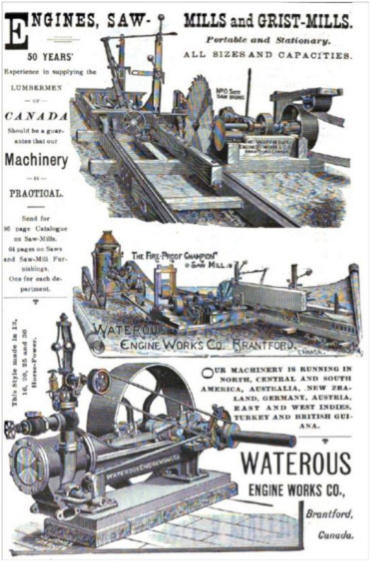
1886 advertisement for the steam-powered sawmills, manufactured by Waterous Engine Works of Brantford, Ontario, Canada, being installed in Chile by Philip Smith.
One wonders what Muir was thinking, hosted by a lumberman and sawmill salesman. In his journal he wrote: “Upon the whole I think I never passed through a finer forest of round-headed hardwood trees. But they are being rapidly destroyed. Only on a small scale can even New Zealand show equal tree desolation.” In a letter to Muir dated June 3rd, 1912, Philip Smith wrote: “We have had a beautiful Summer and our harvest on the farms has yealded satisfactorily, the lumber business also has kept firm, in fact the country has produced so much that our rail road has not been able to move the production as fast as we could wish.” Whatever he thought of the role of his gracious host, Philip Smith, in the devastation of the native forests of the area, Muir did not say in his journal.
Walking around the Fundo Niagara with Harry, we noticed many North American trees: sugar maple, honey locust, sycamore; a small botanic garden. Mr. Smith and his sons loved their trees, and brought their favorites from their home in Canada, even as they had come to Chile to cut down the native forests. But there was no maple syrup here, Harry told us – it never gets cold enough for long enough, and the sap never runs in the austral spring like it does in Canada. He had heard stories, passed down through four generations of the family, of making “sugar on snow”: you take hot maple sap boiled to the syrup stage, and throw it out on snow, where it turns to maple taffy. I told him I had done that in Vermont, and he was fascinated, imagining it.
Now that we knew, from Harry that the “Smith ranch” was at Ontario, we found it on the map and drove there on a cloudless day, wending our way on bad back roads, following Google Maps on Jonathan’s I-phone.
Four men were sitting in the shade by a concrete foundation they were constructing. When we pulled up, they were at first wary. Where were we from? Why were we here? We told them our story, showed them Muir’s sketches, and said we were looking for the place near here where he drew them. One of the men took charge, and warmed up to us quickly when he found we were “extranjeros” from the U.S. and not Chilenos. He introduced himself as Marcelo Mila, a Mapuche, and “presidente” of the group of Mapuches who now live at Ontario. They have been here for ten or twelve years, he said. He offered so show us where you could see the views in the sketches, jumped in the back seat of our rented Toyota Urban Cruiser, and directed us off on a dusty road through fields of recently harvested wheat.
As nearly as we can connect the history between the Smith family and the Mila clan, it seems that when Willy Smith died, his wife Elsie eventually sold the land to a family named Binet in 1947. We guess that it was later purchased by CONADI, the Corporación Nacional de Desarrollo Indígena, the Chilean Government Indigenous Development Service, and then sold or given to the Mila family.
Marcelo first took us to a viewpoint looking southeast across an open field and down into the drainage of the Río Quino. This looked very close to the view of Sierra Nevada and Volcán Llaima in Muir’s sketch. We then went to the other side of the gentle ridge, giving a view to the north and east. From here, except for some big trees blocking parts of the view, we could see the views shown in three of Muir’s connected, panoramic sketches: Volcán Tolhuaca and Lonquimay to the east; the lower broken country of ridges, mesas, and peaks that Muir labelled the “Araucaria region” to the northeast; and Volcán Callaqui to the north.
On November 20th, 1911, Muir wrote “Foggy morn 6 o’clock packing for the lofty ridges where grows Araucaria imbricata… Our party consists of Mr. Smith, Mr. Williams, Mr. Hunter, myself, two Chilean packers, all well-mounted, well-clad, and provisioned.” Later, describing his search for the Monkey Puzzle forests to a friend in 1912, Muir said that the “Patagonian Indians” guided him there, and “treated him with great kindness.” Our guess is that the Chilean packers working for Philip Smith were Mapuches – Mapuches were skilled horsemen and cattlemen and it must have been common for colonists settling on their ancestral lands to employ them on their fundos. We found, a few days later, that at the site on the upper Río Quino where the Muir party camped under an Araucaria grove, the ground in some places was scattered with broken pottery and arrowheads, an archaeological site documenting long use by indigenous people.
At Ontario, we noticed a large field with a horseshoe of stick frames around it, and asked Marcelo about it. That is where we hold the Nguillatún ceremony every three years, he said. This is a sacred place; more than 1,500 Mapuches gather here for the ceremony, he told us. Marcelo said he was worried that the Chilean government was planning to carve a route for a planned giant powerline, the “Carretera Elétrica,” the “Electric Highway,” through this Mapuche land. The Electric Highway is supposed to carry power from new dams on the currently free-flowing rivers of southern Patagonia to the copper and lithium mines in the desert north, powering the flow of Chile’s mineral wealth to China and the rest of the world. It’s the latest version of Chile’s export-driven economy, something like the export of Chile’s native forest wealth in the late 1800s and early 1900s that enriched Philip Smith and his sons.
What are we to make of this, really?
Both of the men we met, Harry Smith and Marcelo Mila, are native sons of this beautiful place on Earth. Both were born here, neither chose where to be born, or to what mother and father. Both clearly love this place. It could well be that the great-grandfather of Marcelo Mila, a Mapuche now living at Ontario, was also one of the men who accompanied Muir to the Araucaria forests, along with Philip Smith, Harry’s great-grandfather. I enjoy imagining that scenario. It would “connect the dots” of the people who have lived on this land, who live here now, and who love it as their own no matter when their ancestors arrived.
More photos of our 2013 trip to Chile
Related links:
- John Muir Papers, University of the Pacific
- Waterous Engine Works sawmills
- Mapuche Nguillatún Ceremony
- Carretera Elétrica Chile
- Fundación Chol-Chol
- Suizandina Lodge, Malalcahuello, Chile

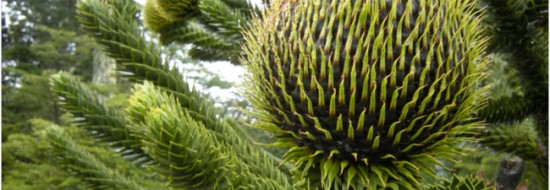
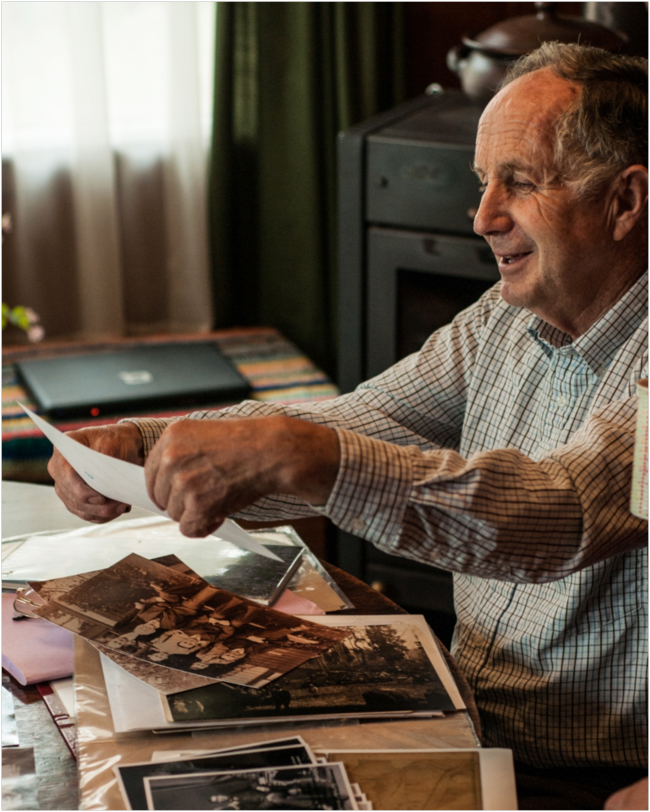
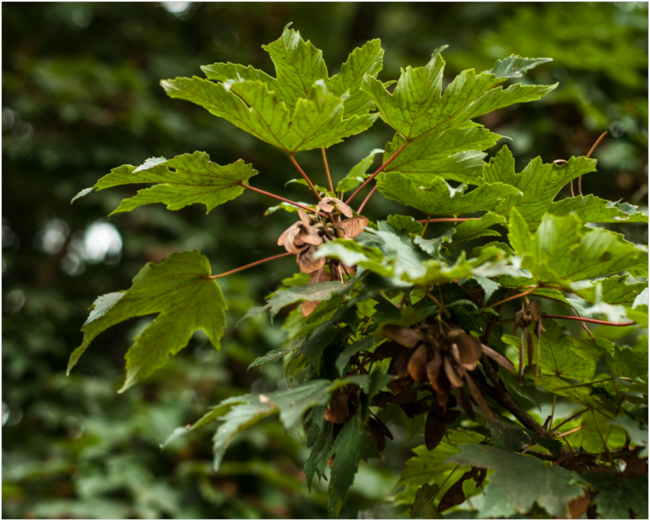
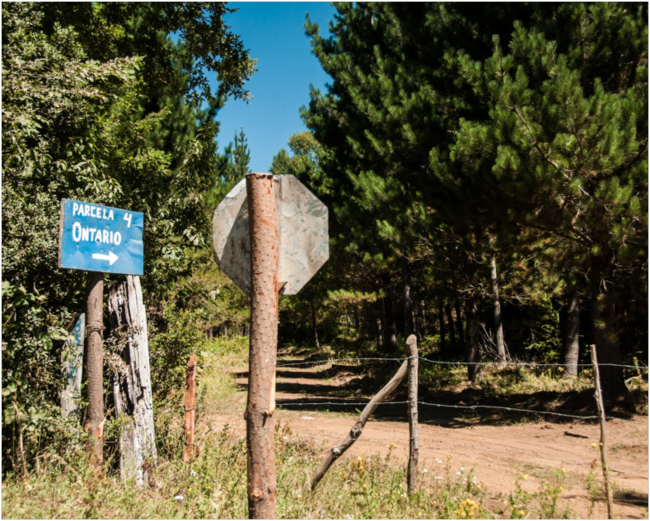
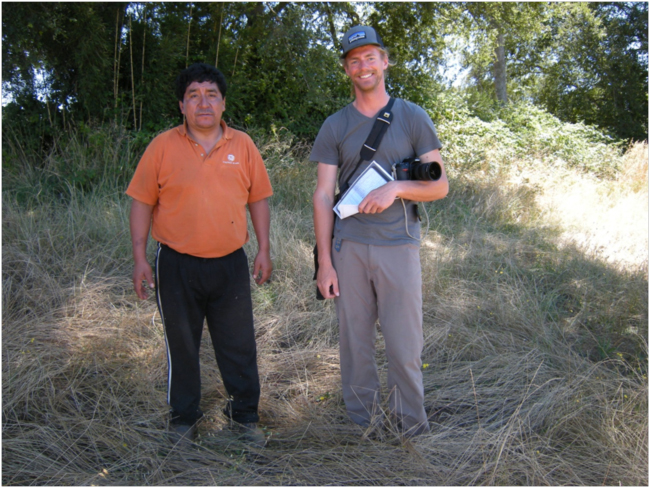
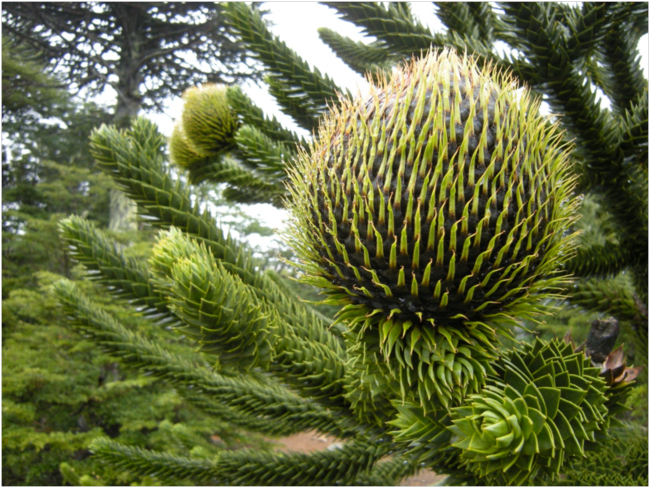
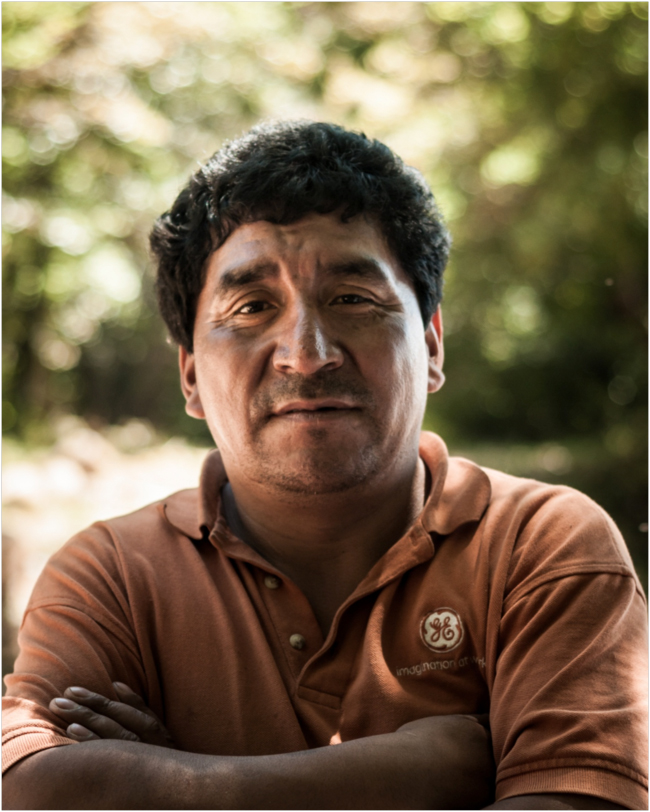



December 6, 2013 3:02 pm
[…] Maples, Mapuches and Monkey Puzzles: Human Dimensions of John Muir’s Travels in Chile […]